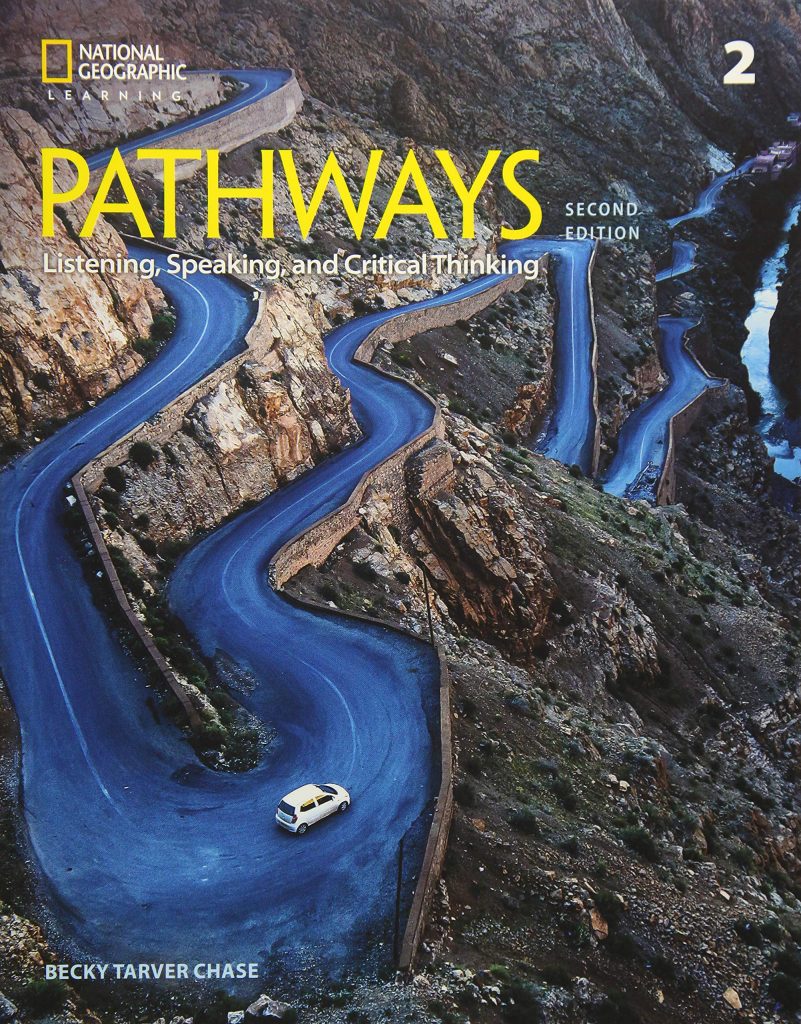What is the textbook?

National Geographic’s Pathways: Listening, Speaking, and Critical Thinking Second Edition by Becky Tarver Chase, Kristin L. Johannsen, Paul MacIntyre, Kathy Najafi, and Cynthia Fettig is an intermediate-level English-learning course textbook.
It is designed for L2 learners who possess a fundamental grasp of English. This textbook is recommended for a teenager- or adult-learner classroom. The ATCFL Standards include 5 Cs—communications, culture, connections, comparisons, and communities (Mihai & Purmensky, 2016)—that evaluate L2 course materials based on the presence and use of varied, multi-purpose content.
Pathways seeks to join together various scientific and cultural fields—such as health, biology, and social studies—with English-language learning to create a relatable and practical pool of teaching materials. Each chapter deals with a different topic that is used as a framework to teach specific English skills. As a result, the textbook is a good adherent to the 5 Cs, although not a perfect one.
What are its strengths?
The textbook’s greatest strength lies its application of practical English-learning through cross-discipline materials. L2 learners have very different backgrounds, so it’s important to select examples and exercises that are meaningful to the student.
Pathways instead simulates a non-L2 classroom as a vessel for teaching English skills. For example, chapter 4 of the textbook focuses on water. In the process of learning about water, students also learn about suffixes, syllabic stress, and voice. Some exercises even combine multiple skills.
This structure of the textbook helps to keep students interested with fresh topics that aren’t always about the same group of people trying to accomplish different goals, as so many textbooks seem to contain.
What are its weaknesses?
An area where the textbook is lacking, however, is in explicit comparisons. Though with each chapter, students are exposed to many different cultures around the world as a means of making cultural connections, there is little focus on L1 and L2 connection. Students are never explicitly asked to consider concepts based on what they know from their L1.
The ATCFL Standards include this factor because L1 consideration plays a part in how each individual student approaches English, the L2. The lack of this explicit comparison from the textbook results in a less individualized learning experience for each student and a more generalized experience that seeks to include everyone.
This is an easy problem to remedy as it requires no extra materials. Instructors can simply add the explicit comparison as part of their personal revisions to the exercises in the textbook.
Assessment
Pathways is a unique approach to teaching English that strays from the traditional and obvious L2 exercises. Students are given various topics to focus on, and they are taught to explore these topics by learning specific aspects of the English language. This dual learning keeps the experience fresh.
If this approach interests you, you may consider purchasing the textbook at National Geographic or on Amazon.
References
Chase, R. T., Johannsen, K. L., MacIntyre, P., Najafi, K., & Fettig, C.. (2018).Pathways 2: Listening, Speaking, and Critical Thinking. Boston: National Geographic Learning.
Mihai, F., & Purmensky, K. L. (2016). Course Design for TESOL: A Guide to Integrating Curriculum and Teaching. Ann Arbor: University of Michigan Press.